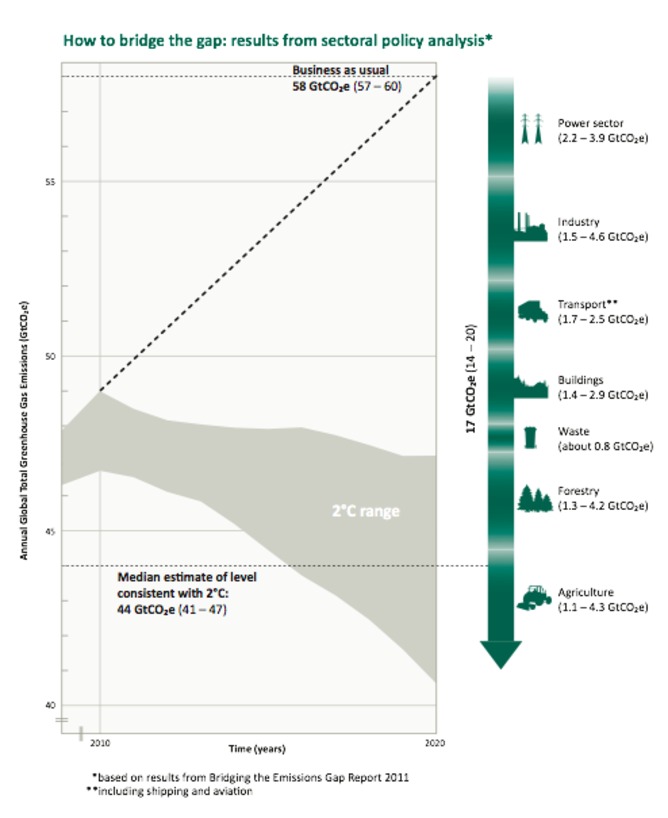Is protecting global rainforests the best way to rapidly tackle climate change
The Conversation: 3 September 2013
“Nothing would do more to rapidly decrease the risk of climate change than a major plan to protect global rainforests,” Opposition climate action spokesman Greg Hunt, media release, 30 August.
Launching the Coalition’s Global Rainforest Recovery Plan at Melbourne Zoo, Hunt outlined a goal of preserving the great rainforests in the Amazon, the Congo and south-east Asia through an international agreement. His media release said the aim would be to halve the 8 billion tonnes a year of carbon dioxide emissions caused by rainforest destruction.
Hunt also said safeguarding tropical rainforests was “part of the biggest single thing the world could do on emissions over the period to 2020”.
An Abbott government would commit $1 million to holding a summit including Indonesia, Papua New Guinea, Myanmar, Vietnam, Cambodia, Malaysia, Laos, Thailand, the Solomon Islands and donor nations Australia, Norway, Germany, The Netherlands and Britain. Hunt said China, India and the US would be encouraged to take part.
Election FactCheck contacted Hunt’s media spokesperson, requesting a source for the statement that “nothing would do more to rapidly decrease the risk of climate change than a major plan to protect global rainforests” and to clarify if the timeframe for that rapid decrease was between now and 2020.
Greg Hunt emailed back this response: “I imagine you may not have read Tim Flannery’s works on rainforest protection, the UNFCCC reports on the REDD or the Norwegian Government analysis of their investment in rainforest.
“You may also have missed the work of the 20th anniversary Biodiversity conference, the reports on rainforest protection from WWF, the IPCC or any other major international assessment of climate change. Once you have reviewed the last three IPCC reports, and the UNFCCC conference notes from the last three COPS, please return if you have any doubts or remaining questions. Any of those 6 documents will outline the effects of deforestation. With deepest respects, Greg Hunt”
Before we delve into emissions figures, it is worth briefly explaining why rainforests are so globally important.
How do rainforests help cool the planet?
Rainforests have at least three impacts on the global climate. First, they store billions of tonnes of carbon in their living biomass, and when these forests are felled or damaged, some of that biomass is converted into the greenhouse gases carbon dioxide and methane. In addition, undisturbed rainforests appear to be absorbing more carbon dioxide than they emit each year. This could be happening because, as carbon dioxide levels rise in the atmosphere, many plants grow faster and thereby store more carbon. This absorption or “carbon sink” effect won’t continue forever, as forests will surely attain a maximum size and capacity for carbon storage at some point. But for now, intact rainforests could be absorbing a few per cent of all human-caused carbon dioxide emissions each year.
Finally, rainforests emit great quantities of water vapour into the atmosphere as a by-product of photosynthesis. This water vapour often forms clouds, some of which are effective at reflecting solar heat back into outer space. This probably slows global warming, although the size of this effect is highly uncertain.
Notably, water vapor that does not condense into clouds is actually a greenhouse gas, which worsens global warming – but, on balance, rainforests are probably helping to cool the planet through vapour emissions and making clouds.
Hence, reducing rainforest disruption, and encouraging forest regeneration where forests have already been lost or severely damaged, would clearly help to slow climate change – so Hunt is correct that this is a crucial issue.
Counting the cost of lost rainforests
Hunt’s media release stated that about 8 billion tonnes of carbon dioxide emissions are caused annually by rainforest destruction and degradation. In fact, estimates of these emissions are quite variable. For instance, five studies published between 2009 and 2012 had median estimates ranging from about 2.9 to 10.3 billion tonnes of carbon dioxide equivalent annually, with an overall average of about 6 billion tonnes.
These studies estimated the “gross emissions” from forest loss and degradation. They did not include carbon dioxide removed from the atmosphere over the same period by forests regenerating on abandoned land or otherwise recovering from damage, which partially offset the emissions from deforestation. If one subtracts the carbon dioxide absorbed by forest recovery from that produced by gross deforestation, the result is termed “net emissions”.
Overall, the best recent estimates we have suggest that deforestation contributes between 10-15% of all human-caused greenhouse gas emissions. Those are the gross emissions from deforestation, and do not include the effects of forest regeneration and recovery.
What are the biggest sources of global emissions?
So how do emissions from rainforest destruction fit into the global picture?
Late last year, the United Nations Environment Programme published The Emissions Gap Report 2012, estimating that there was a total of 50 billion tonnes of greenhouse gas emissions from human activities in 2010.

Billions of tonnes of emissions could be saved globally by 2020, led by the industry, agriculture, forestry and power sectors, followed by others. The Emissions Gap Report 2012, UNEP, November 2012
Between now and 2020 – the timeframe suggested by Hunt’s media release – the report concluded that billions of tonnes could be saved globally from seven sectors, with the highest savings potentially coming from industry, agriculture, forestry and the power sectors, in that order.
The 2012 report noted that one of the single best ways to deliver rapid emissions cuts could come from energy efficiency (both in how we make and use energy).
That conclusion is strongly supported by the most recent report from the leading international body for the assessment of climate change, the Intergovernmental Panel on Climate Change – one of the sources cited by Hunt in his email.
In 2007, the panel forecast that more energy-efficient buildings alone could deliver huge, affordable emissions cuts: around 5 billion to 6 billion tonnes of emissions savings by 2030 at a cost of less than US$20 a tonne. That energy efficiency saving was significantly higher than the estimated 1 billion to 2 billion tonnes of emissions savings available at the same cost over the same period from the forestry sector.
Therefore, it is incorrect to say that “nothing would do more to rapidly decrease the risk of climate change than a major plan to protect global rainforests”, as there is at least equal or greater scope to make cuts in other sectors.
Why saving rainforests is still worth doing
Nonetheless, from a climate change perspective, there are good reasons to protect rainforests, as Hunt has pointed out.
So let’s imagine that an Australian-led international initiative was remarkably successful and managed to reduce emissions from rainforest loss and degradation by 50%.
Doing so could cut current global greenhouse gas emissions by 5-7% or so. As discussed above, there would be some additional benefits from the carbon-sink and cloud-making effects of rainforests, which would diminish less rapidly if forest loss is slowed.
The relatively modest size of that 5-7% saving does not reduce the importance of conserving rainforests; instead, it shows the need for strong accompanying efforts to slow rapid emission increases in other larger sectors too.
How could international deals better protect rainforests?
It would be highly desirable for Australia to work with other countries to help protect the world’s rainforests, as part of a broader effort to limit harmful climate change. Such efforts have actually been ongoing for years, under various national and international schemes.
However, if the next Labor or Coalition federal government truly wanted to advance rainforest conservation, it would face a number of challenges.
For one thing, protecting forests can be enormously expensive, because many competing land-uses, such as production of palm oil, sugarcane, soy, and wood pulp, are highly profitable.
In addition, efforts to slow deforestation in developing nations are politically complicated. One concern often raised by developing nations is that industrialised countries such as Australia and the US might be trying to buy their way out of their international obligations to combat climate change, rather than reducing their own emissions at home.
This could be a particularly big hurdle for the next federal government, given that state governments in Queensland, Victoria and New South Wales are weakening laws designed to reduce land clearing and deforestation.
These laws were originally implemented because Australia has, until recently, been among the biggest forest-destroying nations in the world. From 2005 to 2010, for instance, Australia lost on average nearly 1 million hectares of forest or woodland per year, according to the U.N. Food and Agricultural Organization.
Furthermore, assuming the polls are right and the Coalition is elected on September 7, it may need to modify some of its current policies in order to help protect international rainforests.
For instance, the Coalition, led by the Liberals’ Deputy Leader and Foreign Affairs spokeswoman Julie Bishop, has opposed efforts to reduce imports of illegal timber into Australia. This is a crucial issue because illegal logging is estimated to be worth US$30 billion to US$100 billion a year, and is a major cause of global rainforest destruction.
Verdict
Greg Hunt’s statement conveys an important message about the value of rainforests for the global climate, and clearly any serious attempt to halt runaway emissions growth will require a multi-faceted approach that includes rainforest conservation.
However, to say that “nothing would do more to rapidly decrease the risk of climate change than a major plan to protect global rainforests” is incorrect, as there are other sectors that could deliver equally large or greater emissions reductions than forestry between now and 2020.
Review
This fact check is a thoughtful and balanced assessment of Greg Hunt’s claim.
If the Coalition initiative is successful in reducing global rainforest land-clearing impacts by 4 billion tonnes of emissions annually by 2020, that would be a significant proportion of the 14-20 billion tonnes of reductions shown in the 2012 UNEP chart (above) required to provide a reasonable chance of limiting warming to 2¦C. However, success in international climate negotiations has proved elusive over the past 20 years. It is not obvious how this could be changed by a summit led by Australia, which has a chequered history of performance on climate issues.
The energy sector creates about two-thirds of global greenhouse gas emissions from burning fossil fuels such as coal and gas. According to the International Energy Agency, without strong action to cut fossil fuel use, we cannot rapidly limit warming. Released in June this year, the agency’s special report on Redrawing the Energy-Climate Map concludes that energy efficiency improvement is often profitable and could deliver half of the energy emissions savings between now and 2020.
Meanwhile, renewable energy costs are falling. Recent studies, including by the Australian Energy Market Operator for the federal government, show that a transition to 100% fossil fuel free electricity is both feasible and affordable in Australia over the next two decades.
Finally, reducing methane emissions from coal, gas and agriculture could also offer disproportionately large short-term emission reductions, as methane is a potent greenhouse gas in the short-term (IEA 2013, p.10). – Alan Pears





